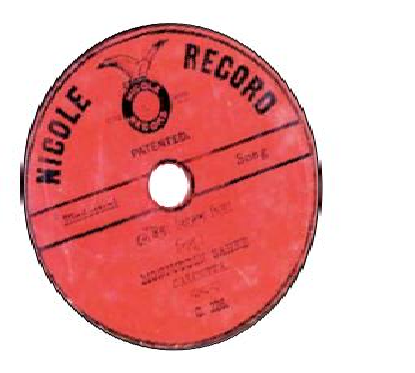
Jalsa is a book on the journey of women performers in India from the salon to the studio. It gives insight into the beginning of the interface of technology and entertainment.
The following is an excerpt from the chapter “The Impact of Technology” of the book.
The Impact of Technology
When recording technology was first brought to India in the early years of the twentieth century, it was welcomed with a similar admixture of fascination and distrust as was the telegraph a few decades ago. Some in the artiste fraternity were charmed by the magical prospects of this western novelty while others were suspicious of its ‘unworldly’ prowess.
Afraid of losing their singing talent many Gharanedars chose not to lend their voices to the records. Some also feared the vulgar publicizing of their artistic endeavours to sections they disapproved of. For instance, Ziauddin Khan, uncle of Ustad Nasir Aminuddin Dagar did not commit to recording because he would not profane his art by making it available to “any common courtesan” who could afford to buy a record.
Those that accepted the technology had to mould their singing to the demands of this new medium. Perhaps the greatest challenge for the early recording artists was the provision of 3 minute rule. A recording disc could only carry 3 minutes of music. The limit imposed was rather unusual for the singers who were used to performing in courts and Mehfils where anything but time would have been a constraint. Practiced in the improvisation and spontaneity of the classical tradition, the pioneering artists soon found ways to bring the aura of Mehfils into the drawing rooms of the commonplace audience. In her recording of Raag Gandhari, Gauhar Jan, the first artist to record commercially, begins the rhythmic composition at a faster tempo, perhaps being over- conscious of the time – factor, but cleverly slows down to suit the composition and the time- frame. Zohra Bai Agrewali (1868 -1913) the fabulous Khayal singer became greatly admired among the artists and connoisseurs alike for her perfect renditions in the 3 minute format.

With the arrival of double sided 78 rpm discs many vocalists and instrumentalists further improvised to record the non- rhythmic alap on one side and the rhythmic part on the other. A convention that continued into the cassette culture towards the end of twentieth century.
The atmosphere of Mehfils was recreated in the studios as people were brought in to exclaim admirations during the recording. More importantly, as musical pieces turned into packaged commodities, the selection of genres became as much a matter of popular appeal as of the ease of adapting a genre to the 3 minute rule. The first half of the 20th century saw a series of semi- classical and light classical genres being marketed under Hindustani Classical titles and regional genres like Kajri, Chaiti, and Thumri became a rage within the recording circles. It has been observed that the more traditional forms like Dhrupad and Dhamar made only a negligible portion of the recorded repertoire.

An interesting practice that was born out of the constraints of production was the singers having to announce their names at the end of recording. Since the records were initially sent to Hanover, Germany for pressing this ensured that the names of the artists were not mixed. This also addressed probably the problem of piracy. These announcements however disappeared when GTL opened its first factory in Sealdah, Kolkata. The locals working there called it the Baja Khana.
The early recording contraptions also put significant limitations on “who or what” was being recorded. Having to sing into the horn of the phonographs, the vocalists were bound to limit their natural head movements. For the instrumentalists though the ordeal was different it was as nonetheless as severe. Barring a few instruments like Shehnai or the clarinet, it was almost impossible to position the phonograph for recording a range of Hindustani instruments.
The early forties see a shift in the outlook of the artists towards recording. Being recorded began to be considered the most prestigious thing that could happen to a performer. By the 1940s and 1950s opportunities and openings to record for commercial companies and the radio were universally sought after, even though the format which recording studios demanded of musicians was strange and inhospitable. The physical placing of percussion and other accompaniment naturally gave precedence to the requirements of electronics rather than to the accustomed rapport between the musicians, which is the life of any performance. It was a daunting experience if not an ordeal for a singer to sit far away from his Tabla and Sarangi and still be able to warm up, as in a live concert. But this was one uncomfortable artistic situation most of them resigned themselves to in the hope of larger audiences and immortality. In any case, from being something new- fangled that was resisted on principle, recording became the new status symbol and introduced a shift in the traditional attitudes to classical music.

The gramophone transformed listening habits as it normalized the repetition of listening. The records became the new- found sources of inspirations for the next generation of musicians. Their first lessons came engraved on the grooves of the 78 rpm discs and the attendance of live performances followed. Listening and copying somebody’s style emerged as new form of education. Later both the composition and style of an artist were looked back from earlier recordings of the maestros of the Gharana or tradition they represented. As preservation became instated through gramophone records, the idea of ephemerality espoused earlier by the Mehfils was pushed to the front by the very technologies that would appear to have eliminated it. So, the live concerts once again became important because of their temporal experience and momentariness.




